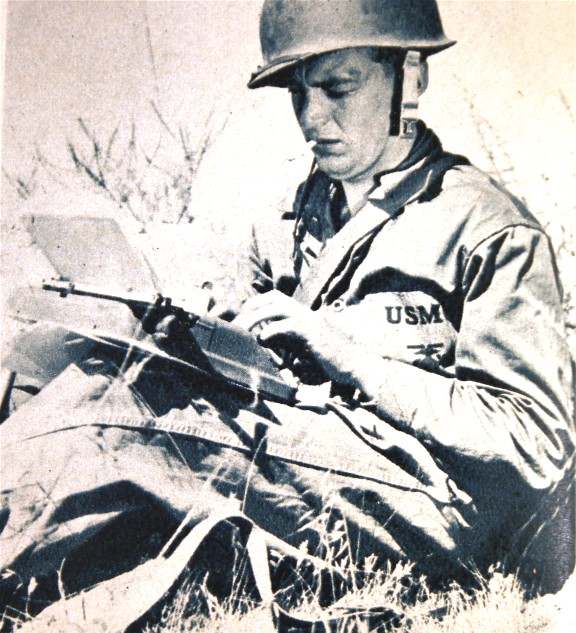After four months of my Impossible Read project, during which I spent most of those days not reading, I have finished the first book on the list: T. H. White’s 1939 book The Once and Future King. I have an Ace Fantasy edition that was printed, and possibly acquired, in 1996.

As I have stated before, when I began this project I demanded far too much of myself — so much that I got in my own way and stymied any progress at all on reading the book. I wanted not only to read the greatest classic works of all time but also to create a neat, creative, multimedia reading journal for the ages. And that was just too much. (I still want to do it, but I’m now telling myself that I can do all that on the second pass through the reading list.)
Once I got over that issue, it was much easier to make time for reading. And after I got past the second “book” in the novel, “The Queen of Air and Darkness,” I was hooked on the story. Sometimes I stayed up late just to read a few more chapters.
The story begins with the boy Arthur, nicknamed “Wart,” being raised by Sir Ector along Sir Ector’s son Kay. The eccentric Merlyn presents himself as a teacher to both of the boys, but since he is living backwards in time his focus is on training Wart — who he knows will eventually be Arthur, King of England.
Along the way in this first section (“The Sword in the Stone”) we meet Robin Wood (not Robin Hood!), Maid Marian, Friar Tuck, and other members of Robin’s band that we remember, or think we remember, from the 1973 Disney movie. I was surprised to see these two very English tales combined in one narrative.
The way this particular version of the King Arthur tale is told, however, soon reminded me of the storytelling structure used in “The Princess Bride” (1987). Though Arthur’s tale is timeless, it’s definitely being told, perhaps as if to children or grandchildren, in 1939. There are references to cricket, to contemporary politics and fashions, and to Nazis. As much as Merlyn cautions Wart to learn to think for himself, the narrator expects the reader to make certain connections between Arthur’s story and contemporary events.
Another curious aspect of this version of the story has to do with how many times the narrator straight-out tells the reader that if they’d like a blow-by-blow retelling they should just read Malory’s Morte D’Arthur. Now that I have finished The Once and Future King, a friend is sending me an 480-page edition of the Malory so I can do just that. (Next time around, of course.)
Anyway. In the first section we also meet King Pellinore and view his curiously codependent relationship with the Questing Beast, who is lost and purposeless when she has no one to hunt her. But we don’t just meet characters; we learn the rules of chivalry and tournamenting that we will need to know all through the book.
Each section of the book views the larger story through the lens of a particular character: Arthur; Queen Morgause and her sons; Lancelot; and an omniscient narrator who jumps from view to view and finally settles back in the mind of Arthur. By the end of the book, Arthur is an elderly king who finally understands Merlyn’s reasons for trying to teach him how to think both rationally and on behalf of his entire nation rather than for his own self-interest. He is able to look back on his life and view his actions in context, now seeing where his mistakes have caused harm. The final pages give Arthur, and the reader, hope of a bright future. In fact, the last two words of the story are the label, “THE BEGINNING.”
Before I read this book I was only vaguely familiar with the notion of Camelot. In “Monty Python and the Holy Grail” (1975), which I have seen several times, it was presented as the home of the Round Table, both a mythic and noble destination and “a silly place.” But it was also used to describe the Kennedy White House. I read hundreds if not thousands of pages about John F. Kennedy when I was a teenager, and came across this reference several times. But since I had neither read the King Arthur story nor watched the movie “Camelot” (1967) by that time, I assumed that it referred to the society of King Arthur and his knights in its glory days. By the time I reached the third book, “The Ill-Made Knight,” I began to see other associations between King Arthur and Kennedy — tragic ones. When I neared the end of “A Candle in the Wind,” the final section, I was reading with a more sober and slightly broken heart.
I mentioned earlier that Merlyn was living backwards in this story, which immediately brought to mind the “Doctor Who” character River Song. She also could not remember when she had last met the Doctor, which would be the first time that he met her. Their relationship was always confused, not the least because the Doctor regenerated two times during her story arc. But thinking about the Camelot connection to the Kennedy administration put me in mind of David Tennant’s Tenth Doctor, particularly at the end of “The Waters of Mars” (2009), when the Doctor succumbs to pride and begins to see himself as an all-powerful force. It’s a terrifying episode in so many ways, but the final minutes of the episode hint less at the monsters than at the tragedy that lies ahead. And of course, “Doctor Who” is another very English tale.
This week I’ll continue the Impossible Read by starting Marion Zimmer Bradley’s 1982 novel The Mists of Avalon, of which I own a 1984 Del Rey/Ballantine edition. This time, the Arthurian legend will be told from the point of view of the women in the story. After I finish this book, I will close out the segment with three movies: “The Sword in the Stone” (1963), “Camelot,” and “Monty Python and the Holy Grail.” Huge thanks go to my friend Casey for suggesting that I watch the movies in this order. The idea is that I’ll watch a child’s version of the Arthur legend, then watch a grown-up’s version of the story, then watch a version which turns everything upside down and then blows it all up.
I added one more typewriter to my collection this weekend, despite the fact that its thrift store label read “DOES NOT WORK.” The label also read “$2.00,” so I was willing to take a chance that it might just turn out to be a parts machine for another collector/restorer. But I’m not sure that will be its fate.
This 1951 Remington-Rand Super-Riter Standard was designed so that its top, side, and back panels would practically pop off for access to the insides for cleaning and adjustments. (They were loose when I bought it; perhaps that convinced the previous owner that it was truly falling apart.) After I brought it home I was able to quickly find and download, for free, both its user manual (“Operating Instructions”) and its 77-page service manual (“Mechanical Instructions”).

And after a few minutes of skimming the manuals and fiddling around, I was able to get several things working that hadn’t worked before. The carriage still doesn’t advance when the keys are pressed, but that feels like some kind of mechanical misalignment; something just isn’t catching. I will have to learn more and dig deeper to find and address the mechanical difficulty, so for now I have fastened the panels on more securely, taken some photos, and created an entry in my typewriter inventory.
The typebars are in wonderful shape: this is regular-motion elite type.

Knitwise, I added a few rows to the Habit-Forming Scarf in the course of the week and weekend. It’s now 22-1/2 inches long. I usually get more knitting done on a Formula One weekend; the next race (Imola) isn’t until next weekend, but Monaco will be held the following week.
I did pull the rest of the yarn from the skein and wind it into a little ball. That reminds me that the next skein is soon to come.
My campus (and community) based yarn community will meet on May 21 for lunch and yarning. Surely by the time the green flag is waved at Monaco, I will have joined the second skein of yarn to the scarf.
































